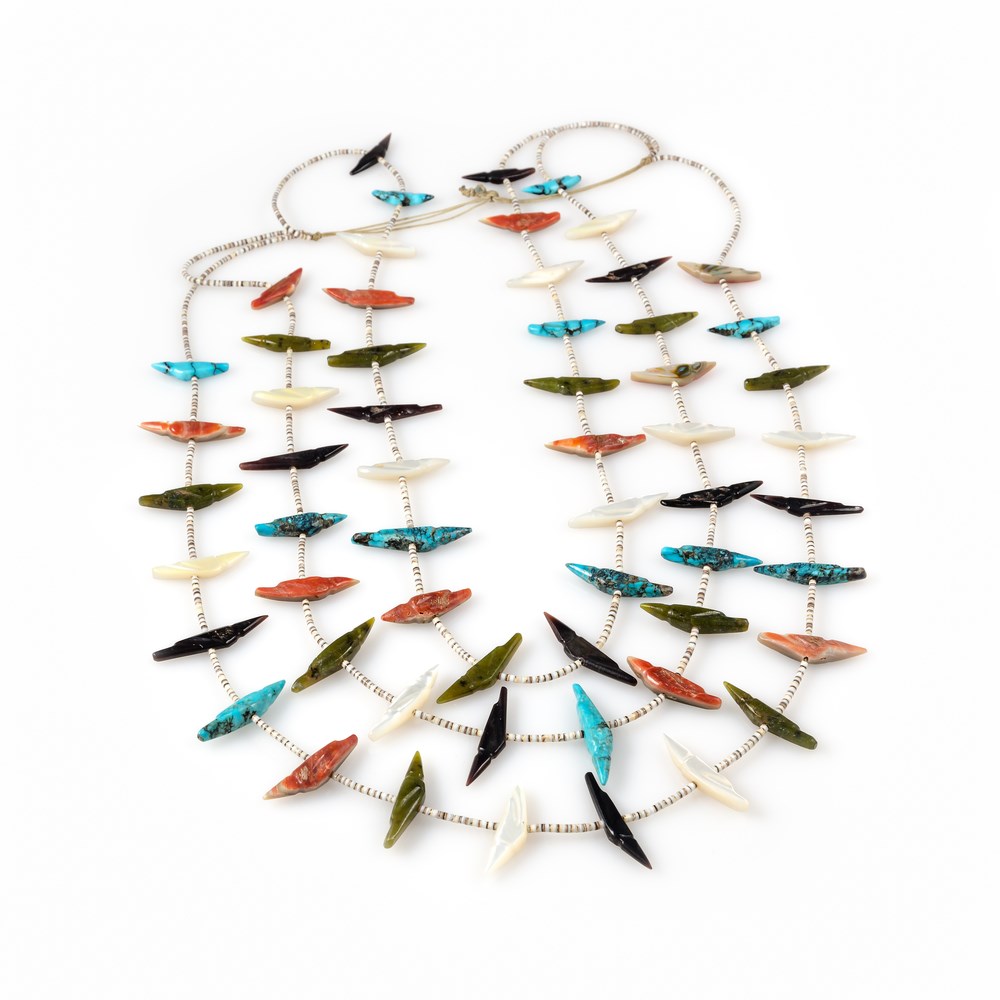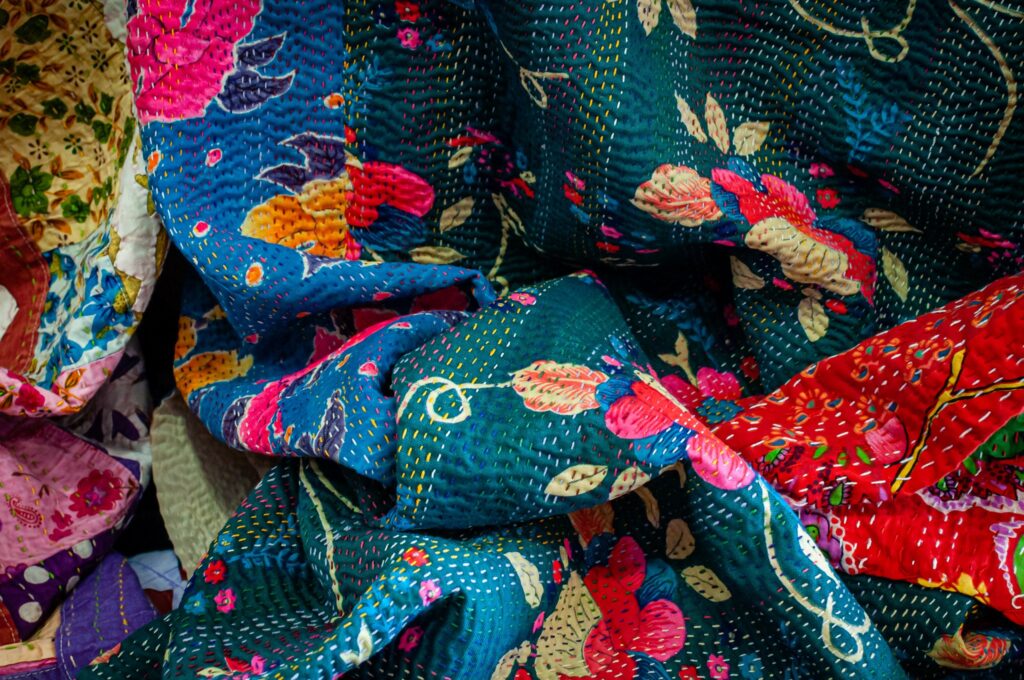
Zuni and Navajo: fetish animals in Southwestern culture
Zuni and Navajo fetishes are small carvings made from primarily stone but also shell, fossils, and other materials by the Zuni and Navajo people. Within the Zuniand the Navajo communities these carvings serve ceremonial purposes for their creators and depict animals and icons integral to their culture. Prior to the Zuni and Navajo People, the Hopi and Pueblo people, especially at Kewa, also carved and used fetishes.
The primary non-Native source for academic information on Zuni fetishes is the Second Annual Report of the Bureau of Ethnology submitted in 1881 by Frank Hamilton Cushing, where he reports that the Zuni and Navajo divided the world into six regions or directions: north, west, south, east, above, and below. At the center of each region is a great mountain peak that is a very sacred place. Yellow mountain to the north, blue mountain to the west, red mountain to the south, white mountain to the east, the multicolored mountain above, and the black mountain below.
Each direction is represented by a Prey God, or guardian animal, and are listed by Cushing as follows:
- north: yellow mountain lion
- west: black bear (represented by the color blue)
- south: red badger,
- east: white wolf,
- above or the sky: multicolored eagle
- below or underground: black shrew (often misnamed “mole,” but moles do not live in the Southwest).

Each prey god is the “guardian and master” of their region, with the yellow mountain lion being the elder brother of all animals and the master and guardian of all regions. Each one of these regions contains an order of all the guardian animals, but the “guardian and master” of a particular region is the elder brother to all animals of that region. These guardians are considered as having protective and healing powers. They are held by the priests of the medicine orders as if “in captivity” and act as mediators between the priests and the animals they represent.
A second group of fetishes, the Prey Gods of the Hunt, belonging to the Hunter Order, or Society, are given in the “prayer songs of the Sa-ni-a-kia-kwe”. These guardian animals are the same as the original regions with the exception of the coyote, which replaces the bear; and the wildcat (or bobcat), which replaces the red badger.Sa-ni-a-kia is the awakening of the fetish and subsequently the power of the hunter.
In addition to the animals mentioned above, typical Navajo or Zuni fetishes depict animals such as the wolf, badger, bear, mountain lion, eagle, mole, frog, deer, ram, and others.
Materials
Historical carvers used locally sourced materials or item procured by trade or pilgrimages. The most important of these materials was Turquoise, which the Navajo regard as the sacred stone of life. Jet, Shell, and Coral are also frequently used. These materials and their associated colors are principle in the Navajo and Zuni culture,where they represent their Sun Father.
Other materials used are Travertine, Jasper, Pipestone, Marble, Glass or organic items such as fossilized Ivory, Bone and deer or elk antler, even though historically the most-used stone has been serpentine, a local soft stone abundantly found in Arizona In recent years Navajo and Zuni carvings, or fetish have become popular collectibles.

SACREDNESS
In Zuni cosmology and those of neighboring tribes, each animal is believed to have inherent powers or qualities that may aid the owner. The Navajo, for example, treasured and bartered for figures of horses, sheep, cattle or goats to protect their herd from disease and to ensure fertility.
The Zuni hunter was required to have his fetishes (prey gods of the hunt) with a “Keeper” and practice a ceremony of worship when procuring a favorite or proper fetish to aid in a successful hunt. In the ceremony of the hunt the Keeper presented a clay pot containing the fetishes to the hunter. Facing in the direction appropriate to the chosen fetish the pot was sprinkled with medicine meal and a prayer was recited. The fetish was placed in a buckskin bag and carried by the hunter over his heart (Cushing, 1994:33). The fetish aids in the chase and represents “the roar of the animal” and is also fed on the blood of the slain prey.
In addition to the Prey Gods of the Six Regions with their guardian and medicinal powers, and the Prey Gods of the Hunt that aid in the chase, Cushing names three Prey Gods of the Priesthood of the Bow, a society of which he was a member, that aid a Priest of the Bow when traveling in a region where he may be captured by the enemy. These are the mountain lion and great white bear, which belong to the “skies”, as well as a prey god of human form adorned with “flint knife-feather pinions and tail”.
An arrowhead, “emblematic of Sa-wa-ni-kia”, or the “medicine of war”, on the back or side of either of these animals prevented a warrior from being taken by surprise by his enemy, and an arrowhead on the belly or feet erased the tracks of the carrier so that they could not be followed by the enemy. Like the Prey Gods of the Six Regions they were protective of the carrier.
On the subject of feeding, within these cultures it is believes fetishes require periodic meals of cornmeal mixed with ground turquoise. Fetishes may be kept in a clay pot as it is the tradition. Any but the very delicate fetishes could be carried by the owner in a pocket, pouch or bag.

Opposite to the fetish carvings that the Navajo and Zuni carvers create to be sold, the traditional fetishes do not leave the village and are blessed by a spiritual leader and used by the carver himself or a special recipient
RELIGION AS ART
Fetish carvings have been around for centuries. Ancient Pueblo effigies were an earlier form of a Navajo fetish carving.
The artist’s styles are as unique as the artists themselves, and there are many whose works are highly sought after by collectors. Some collectors prefer a figure that is more realistic in appearance, while others prefer the more classical styles that are intrinsic to the belief of the Nation (being Zuni or Navajo). The customary perspective is that the least modification of the original material maintains, or heightens, the power of the fetish as a “natural concretion.”A fetish may be signed by the carver, or not. Personalization by signing a piece of art violates the historic notion of community purpose, and the signing of artwork is a concept introduced to the Native by Anglo collectors at the beginning of the 20th century (c. 1915). Most carvers are the recipients of a family practice and have learned their skill from parents, grand parents, or siblings, and have passed the art to their own children as well.
Besides being made from various stones and other materials (where each material has its unique properties), the contemporary fetish may carry an offering of a smaller animal or a prayer bundle of carved arrowheads with small heishi beads: it may be adorned with a heishe necklace, feathers, etchings representing ancient petroglyphs, or an inlaid or etched heartline. These small items, although colorful to the eye, are intended to protect and feed the fetish itself.
See our collection of Zuni neklaces here










